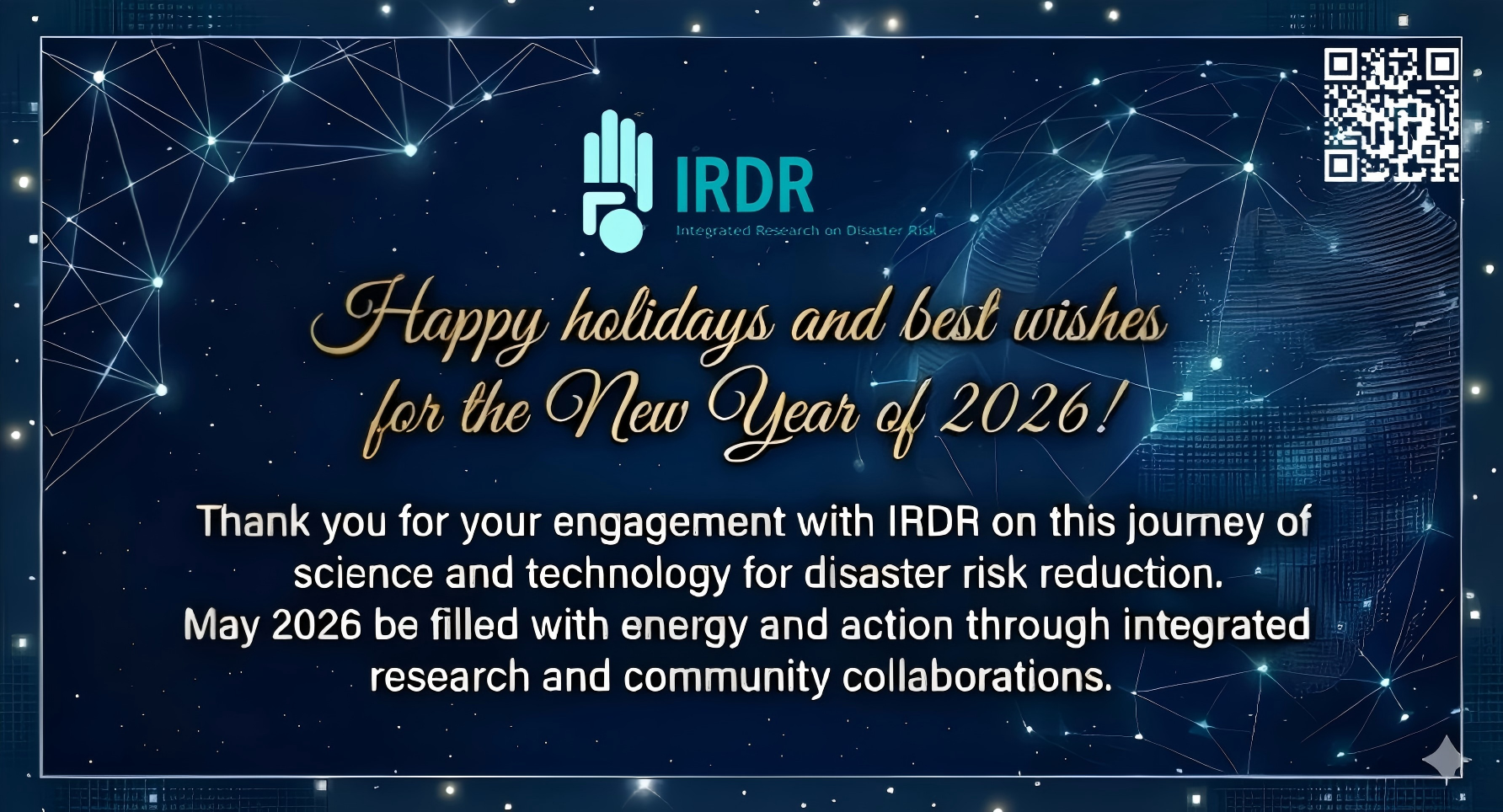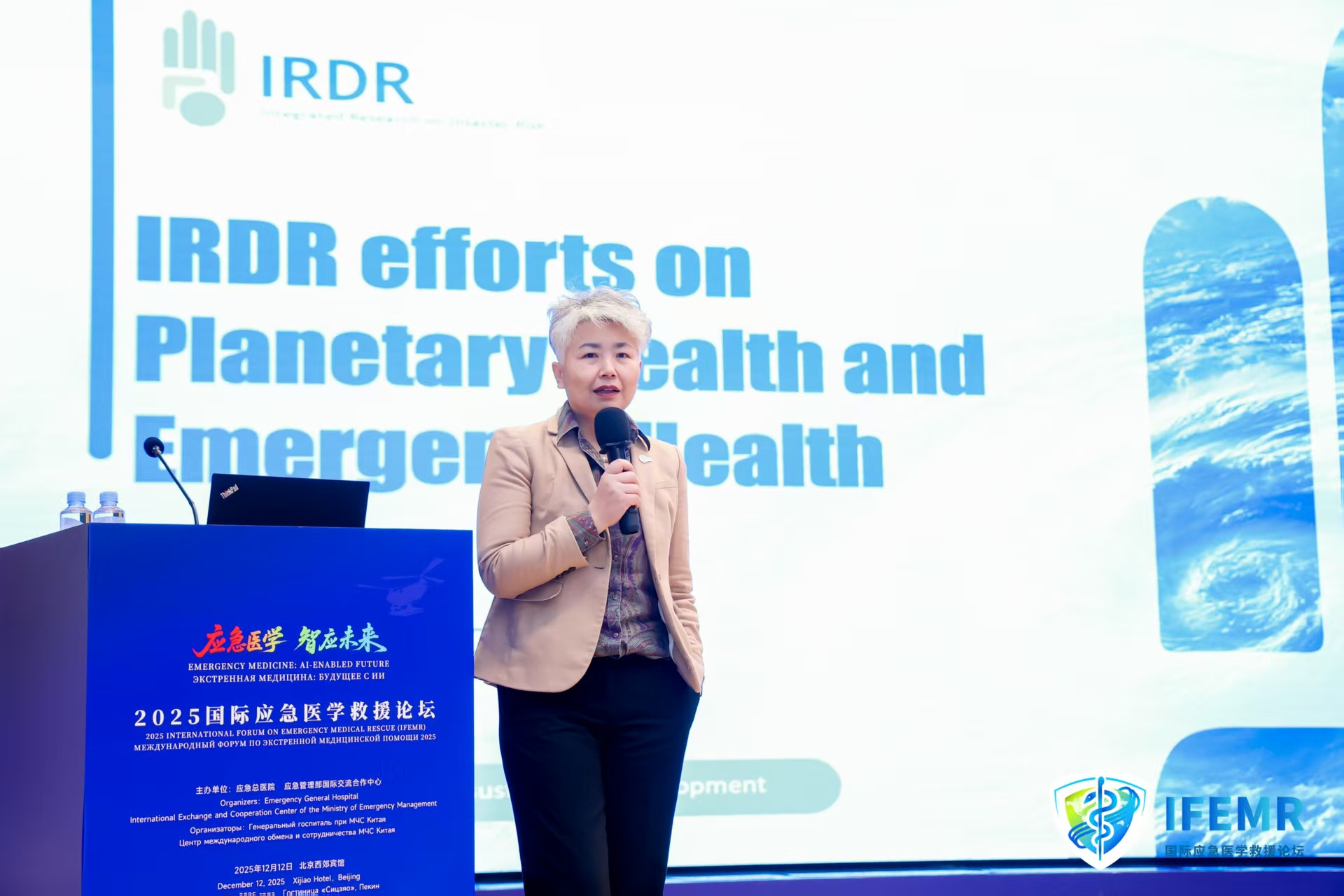The 5th IDRC Davos 2014’s first Plenary Session (Outcomes of Recent International Disaster Risk Reduction/ Management Conferences) offered a platform for some major conferences on DRR which have been held within the first six months of 2014 to provide input to UNISDR’s Proposed Elements for Consideration in the Post-2015 Framework for Disaster Risk Reduction at the UN World Conference on DRM in Sendai, Japan in March 2015.
The outcomes from the “Integrated Disaster Risk Science as a Tool for Sustainability” Conference held in Beijing, China last June 2014 was presented in this session. IRDR’s Executive Director R. Klein spoke about the success of the IRDR conference, the input for a cutting-edge science agenda received in particular by young scientists (RIA fellows), and the links between SDG and DRR.
Klein shared how the World Social Science RIA Fellows were invited to participate in the IRDR Conference to identify cross-cutting debates, to help shape future research and action agendas for integrated approaches / building bridges. He also shared the achievements within DRR, SDG’s and Climate Change Adaptation, with DRR now embedded in IPCC process (SREX Report 2012), the ICSU-IRDR pioneering role in UN Open Working Group “Sustainable Development Goals” (2013/2014) and the ICSU-IRDR lead Major Group Science & Technology (2014) during preparatory phase / Geneva PrepCom’s for Sendai with DRR – SDG – CCA included in the Plenary Statement.
UNISDR’s Kazuko Ishigaki presented on “Post-2015 Framework for Disaster Risk Reduction: A Proposal for Monitoring Progress.” UNISDR, in collaboration with leading experts in related fields, is developing a proposal for new system of DRM indicators, which will contribute to discussions on HFA2 and WCDRR. This initiative follows the fourth session of the Global Platform for Disaster Risk Reduction, held in May 2013 in which 3,500 participants from 172 countries called for an immediate start of work to be led by the UNISDR to develop targets and indicators to monitor the reduction of risk and the implementation of HFA2.
Peijun Shi, Prof. and Vice President of Beijing Normal University presented on the “Outcomes of the International Symposium on Integrated Disaster Risk Governance, Beijing.” Shi explained that with climate change and China’s rapid economic growth and urbanization, there is significant pressure on China’s resources, environment, and ecology. The situation is further complicated by the need to address natural disaster prevention.
Kyoji Sassa, Executive Director of the International Consortium on Landslides (ICL) presented the “Outcomes of the World Landslide Forum 2014, Beijing.” The World Landslide Forum 3 created an opportunity to promote worldwide cooperation and to share new theories, technologies and methods in the fields of landslide survey/investigation, monitoring, early warning, prevention and emergency management.
Daniel Kull, Humanitarian-Development Attaché, Senior Disaster Risk Management Specialist from the World Bank Group, Global Facility for Disaster Reduction and Recovery GFDRR presented on the “Outcomes of the Understanding Risks 2014, London.” Understanding Risk (UR) is a global community of experts and practitioners in the field of disaster risk assessment that convenes every 2 years at UR Forums.
Virginia Murray, Public Health Consultant in Global Disaster Risk Reduction, Public Health England, London presented on the “Outcomes of UNISDR Regional Meetings.” At the conclusion of the UNISDR Scientific and Technical Advisory Group report on ’Using Science for Disaster Risk Reduction’ at the Global Platform in May 2013 (Southgate et al 2013), the UNISDR Scientific and Technical Advisory Group recommended that science should be key to the Post-2015 framework for disaster risk reduction (HyogoFramework for Action, HFA2).
Moreover, in the last week of March 2014, UK Collaborative on Development Sciences (UKCDS) and the Wellcome Trust hosted two days of meeting with senior representatives of international, regional and national institutions to discuss a new and strengthened mechanism to ensure science, engineering and technology are more effectively used in disaster risk reduction and the successor to the Hyogo Framework for Action (HFA2). The participants developed a joint Statement on establishing an international science advisory mechanism for disaster risk reduction to strengthen resilience for the post-2015 agenda and on their commitment to work together to ensure science, engineering and technology are embedded into disaster risk management. In July 2014, the first Preparatory Committee Meeting for the Third UN World Conference on Disaster Risk Reduction supported for access to science and scientific methods and technologies as well for establishing an international science advisory mechanism for disaster risk reduction to strengthen resilience for the post-2015 agenda.
Following these plenary sessions, the panel discussion identified gaps and needs for next steps and further research on DRR/M, in regards to education, capacity building and implementation with the goal of revealing commitments for the implementation of the Post-2015 Framework for DRR/M.





